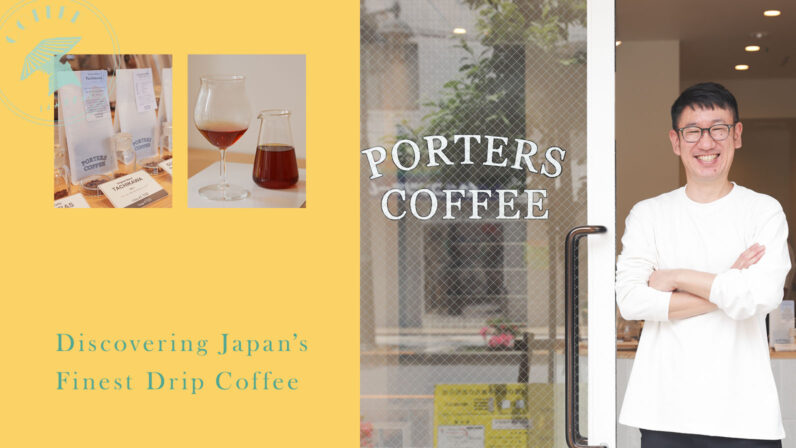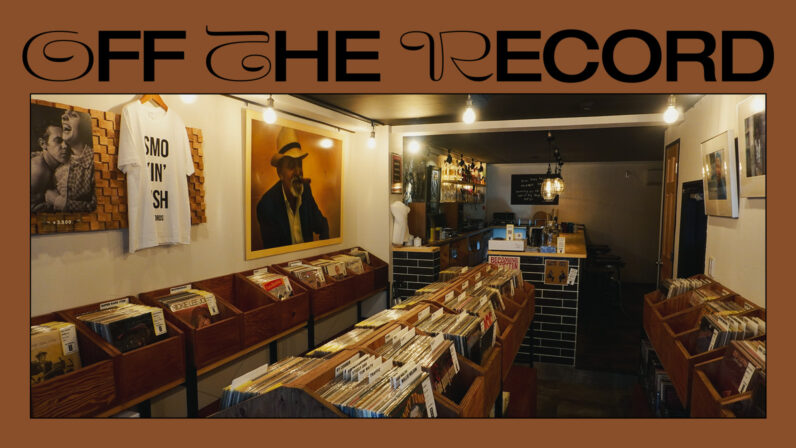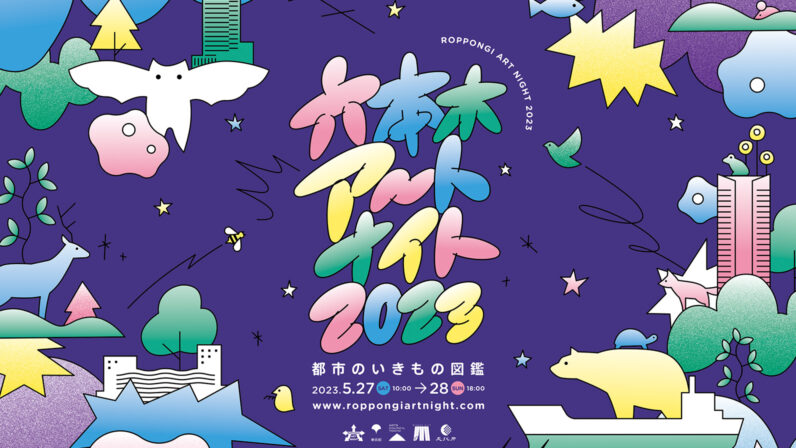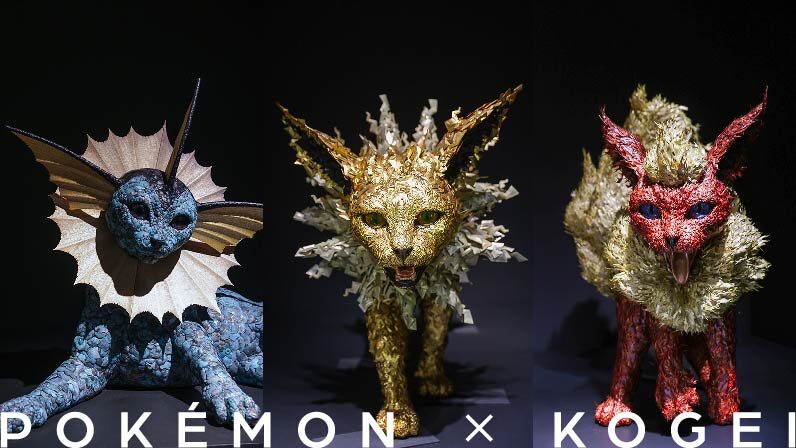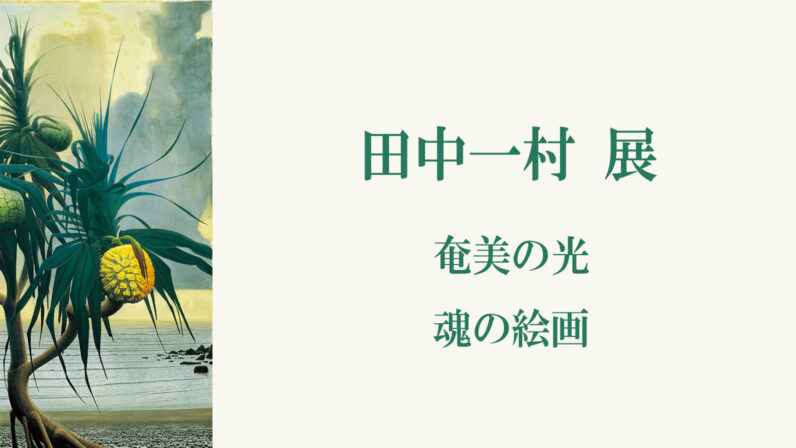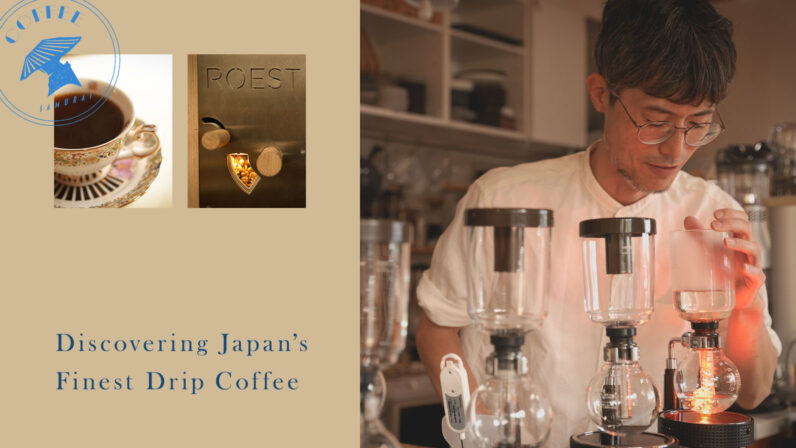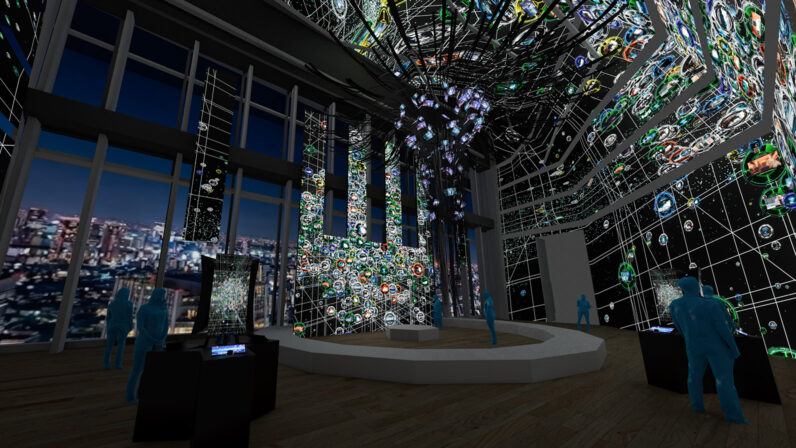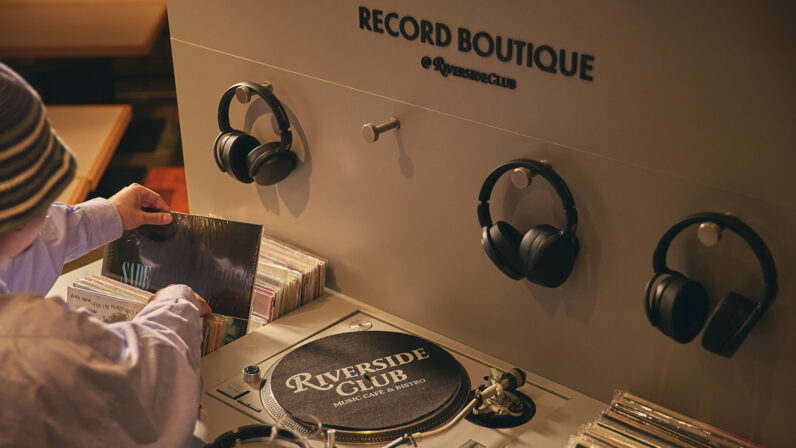Mademoiselle Yulia is a multifaceted talent—she is active in the fashion scene as a DJ while also producing her own kimonos. In this series, Yulia, who is well-versed in art and architecture, visits her favorite spots and discusses how she coordinates kimonos that harmonize with the surroundings.
For the first installment, Yulia travels to the Tokyo Metropolitan Teien Art Museum, an iconic early 20th-century architectural landmark. Inspired by the ongoing ‘YUMEJI Exhibition: Taisho Romanticism and the New World,’ she showcases a kimono ensemble that draws inspiration from the museum’s Art Deco aesthetics.
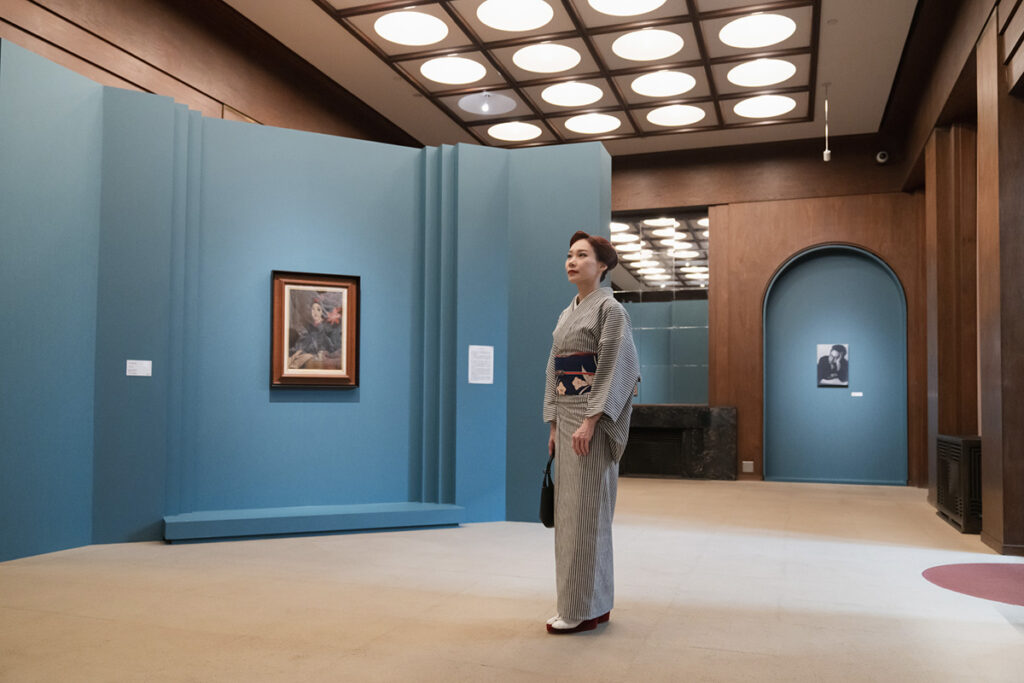
In the first-floor grand hall, where the walnut wood shines with an amber glow, the legendary artwork ‘Amaryllis’ is being unveiled for the first time. The ceiling design, featuring 40 circular lights arranged in a neat grid pattern, is also a stunning highlight.
A Distinguished Residence Capturing the Splendor of Art Deco Style
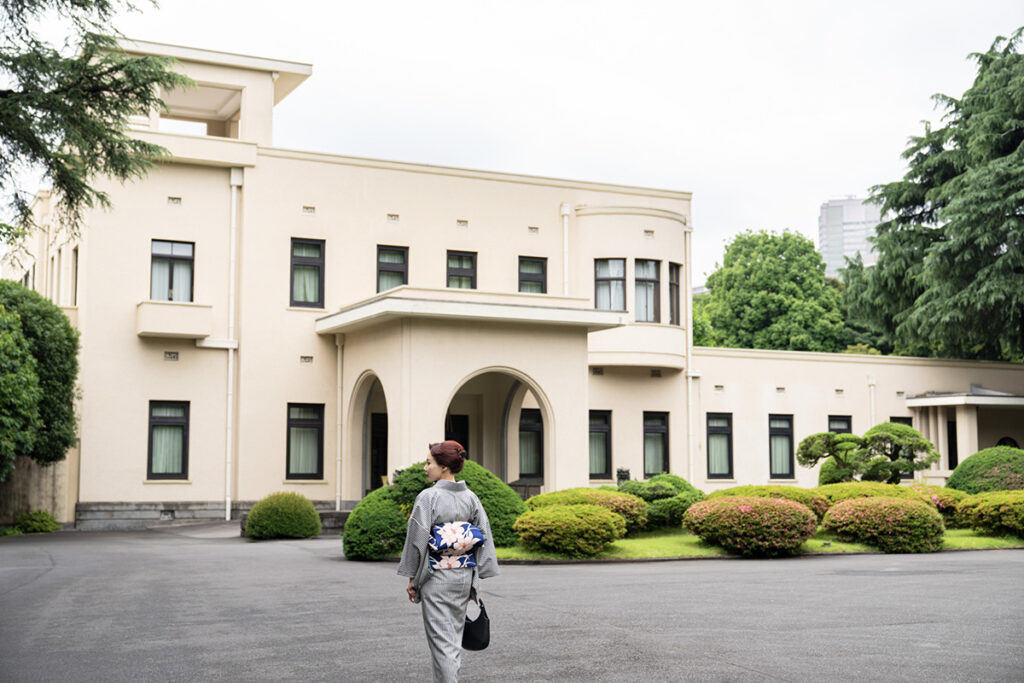
Passing through the long approach enveloped in green from the gate, a building filled with a serene aura comes into view. The rounded bay windows and arched entrance signify the architectural beauty.
People primarily visit art museums to appreciate the exhibited art. However, it’s no exaggeration to say that the Tokyo Metropolitan Teien Art Museum itself is as impressive as the artworks it houses. Originally built in 1933 as the private residence of the former imperial family, the Asaka family, it wasn’t initially intended as a public facility. During their stay in Europe, Prince Yasuhiko Asaka and Princess Nobuko Asaka were captivated by the Art Deco movement that swept through early 20th-century Europe, and they meticulously infused its essence into every detail of the mansion.

At the main entrance that symbolizes the mansion, visitors are greeted by ‘Winged Female Figures’ created by glass artist René Lalique. These four female figures are each crafted using pressed glass techniques. The mosaic floor, made with natural stones, is also a splendid display.
Yulia explains “The Prince and Princess were intimately familiar with the crème de la crème of Japan. It was this superior intuition and their exceptional taste that led them to pour their passion into an architectural space inspired by the cutting-edge art of Paris, where the pinnacles of Japanese and Western aesthetics beautifully blend. I was immediately captivated upon my first visit. Even after numerous visits, there are always new discoveries that captivate me.”
Now, let’s explore this extraordinary residence and delve into its charm.
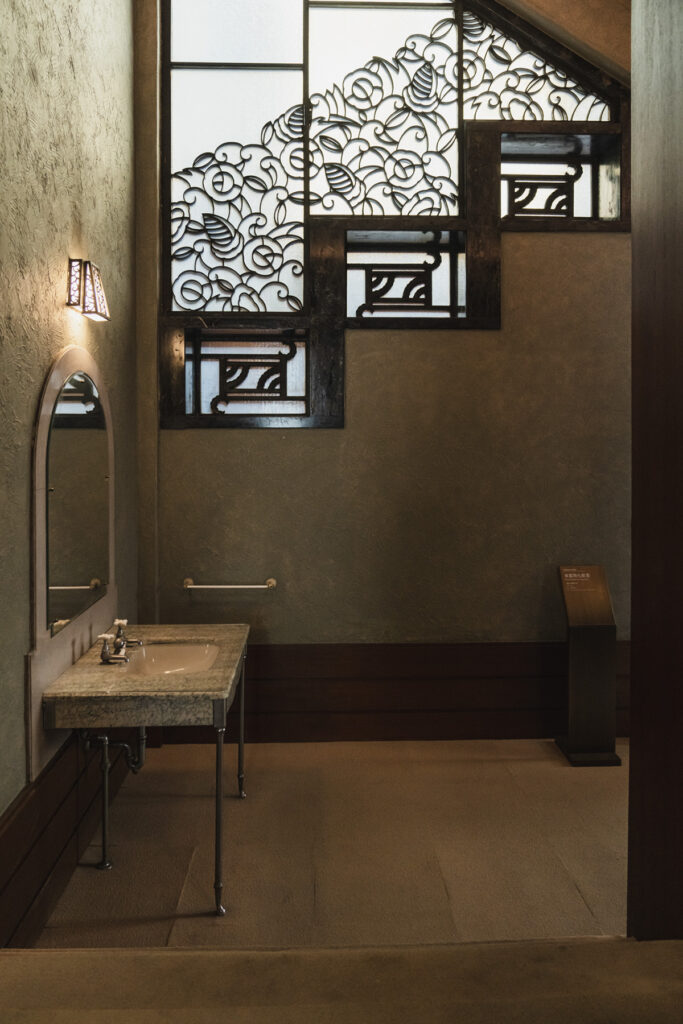
A guest washroom space under the stairs, featuring glass reliefs, a marble washbasin, and lighting that showcases a sense of style from the mirror’s shape to the illumination.
The mansion serves different purposes across its first and second floors. The first floor was designed for hosting guests, featuring a reception room, a spacious hall, and a grand dining room. Each room is decorated with dynamic works by Art Deco pioneers like René Lalique and Henri Rapin, beautifully complemented by the intricate craftsmanship of the Imperial Household Agency’s artisans. Notably, the large guest room facing the southern garden on the first floor encapsulates the essence of Art Deco within the mansion. Its plastered ceiling boasts geometric designs, while the walls are adorned with oil paintings by Henri Rapin himself.
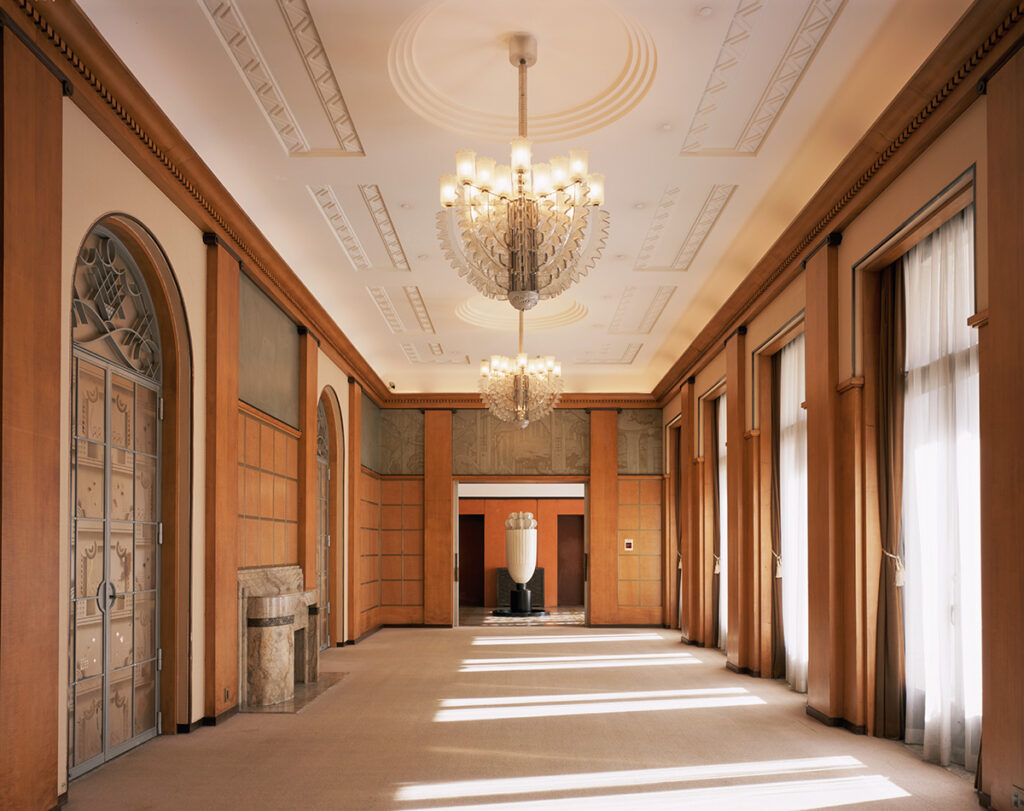
The grand guest room on the first floor features doors inset with silver-frosted etched glass panels and a chandelier ‘Bucharest’ by René Lalique, all works of art in their own right. Image credit: Tokyo Metropolitan Teien Art Museum
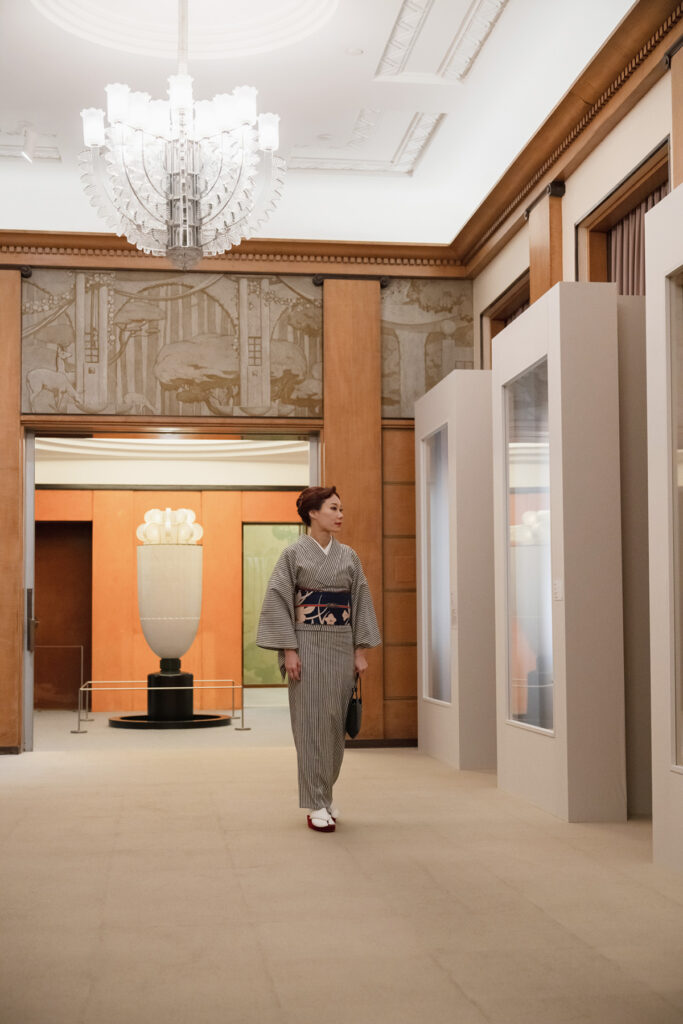
“In the grand guest room, you can feel the creative spirit of the artisans from the Imperial Household Agency in every detail. Art Deco was the inspiration, and despite having never been to Paris to see the blossoming art movement first-hand, the artisans were dedicated to the task at hand. Their creations captured the essence of Art Deco with subtle elements of Japanese aesthetics when closely examined. Details such as radiator covers and vents vary in design from room to room, each hiding its own charm. Despite its luxuriousness, there’s an inherent elegance that exudes an overwhelming sense of refined taste,” says Yulia.
The grand dining room connected to the guest room served as a dining space for numerous dignitaries. Henri Rapin not only adorned the wall above the fireplace with murals but also designed the space. With its large bay windows curving to overlook the garden and walls illuminated by profound light from Léon Bénard, the room exudes an elegant and dimensionally expansive ambiance that’s truly breathtaking.

The interior design and murals of the grand dining room are by Henri Rapin. René Lalique’s lighting fixture ‘Pineapple and Pomegranate’ adds a strong accent to the curved ceiling. The fireplace cover, symbolizing fire, cleverly incorporates motifs of fish, representing water, adding a stylish touch.

René Lalique’s lighting featuring fruit motifs, harmonizes with Yumeji Takehisa’s artwork ‘Rest (Woman)’ displaying with grapes at the top of the panel (Early Showa era, Color on silk, Collection of the Yumeji Art Museum).
While the first floor impresses with its grandeur, the second floor was designed as the family’s private living space. At the landing atop the grand staircase, a spacious room serves as the family gathering place, surrounded by a study, children’s rooms, bedrooms, and a sunroom. The jade-colored walls of the spacious room feature abstract patterns created by tools like trowels, showcasing the expert craftsmanship of plasterers. Yulia particularly favors the discreet presence of the ‘seigaiha’ (blue wave pattern) and ‘chidori’ (plover bird) radiator covers in this room, which were once part of the imperial household’s residence. During the era when the Asaka family resided here, a piano was placed here. It’s easy to picture the them relaxing on the built-in sofa, and also wonder what melodies filled these moments of familial harmony.
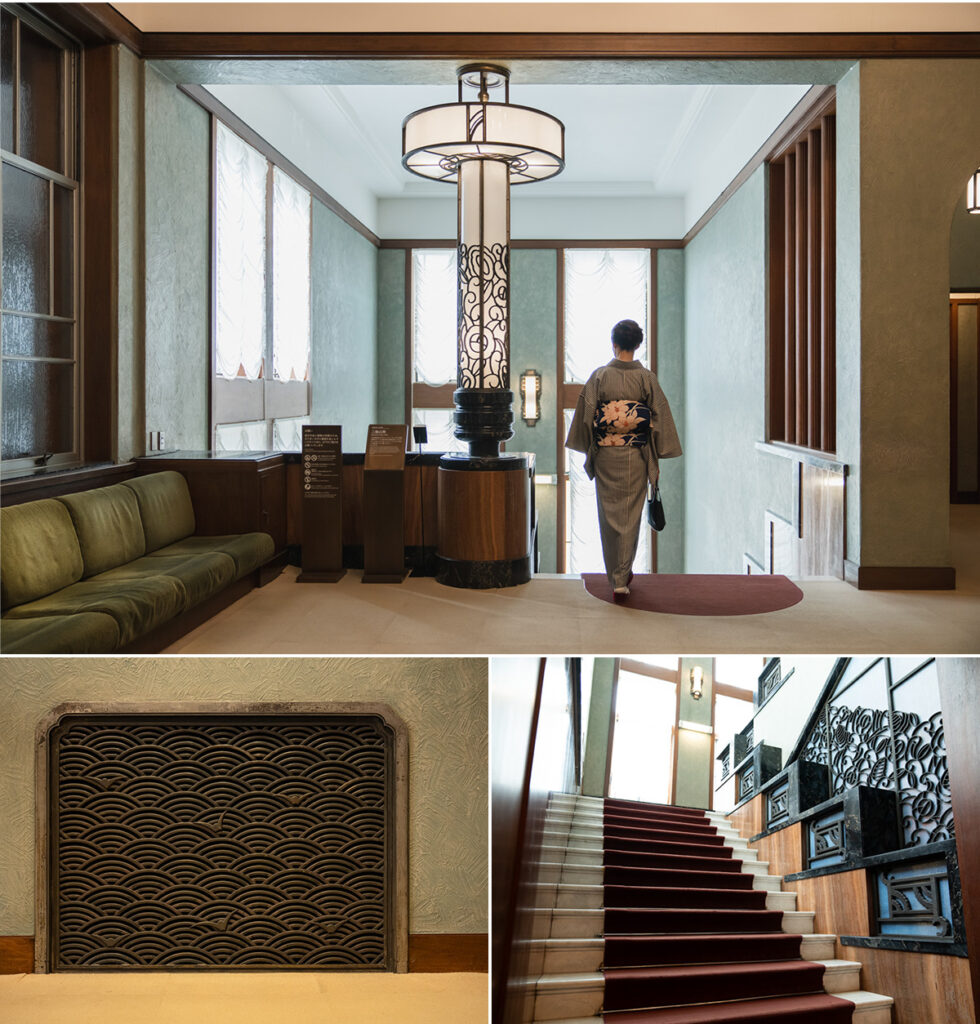
A spacious room designed by the artisans of the Imperial Household Agency, seamlessly connected from the grand staircase. Traditional Japanese patterns are displayed the radiator covers, concealing the heating units.
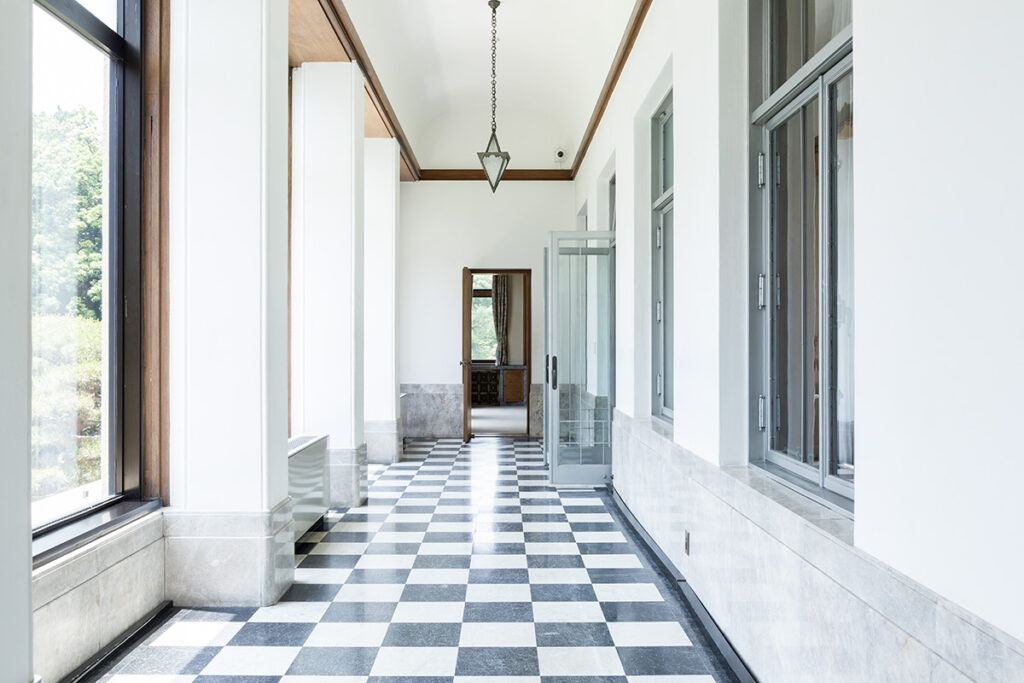
Yulia’s favorite spot is the balcony adorned with monochrome marble in a checkerboard pattern. It was exclusively used by Prince Asaka and Princess Asaka, accessible only from their private quarters. Image credit: Tokyo Metropolitan Teien Art Museum
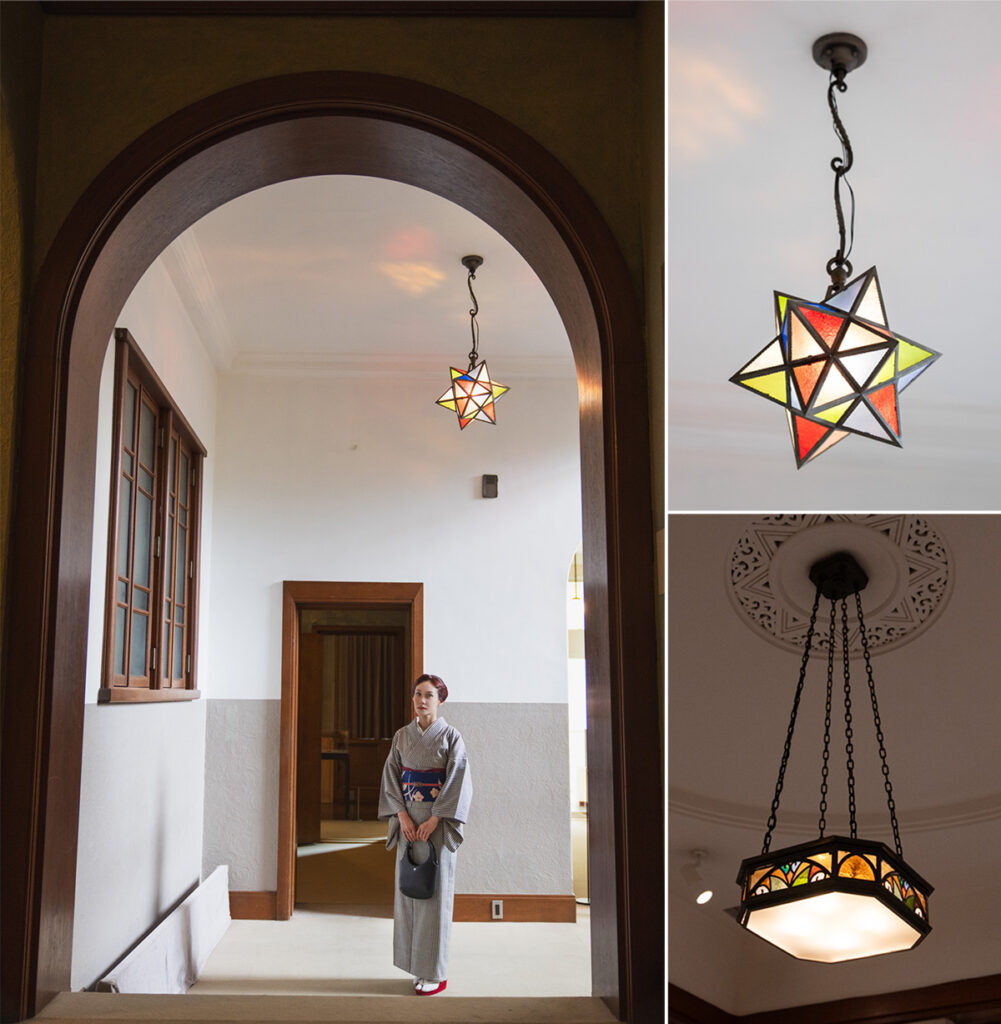
The stained glass lighting softly illuminates the ambiance of the mansion.
Infusing a Touch of Aesthetic Allure into Modern Striped Pongee
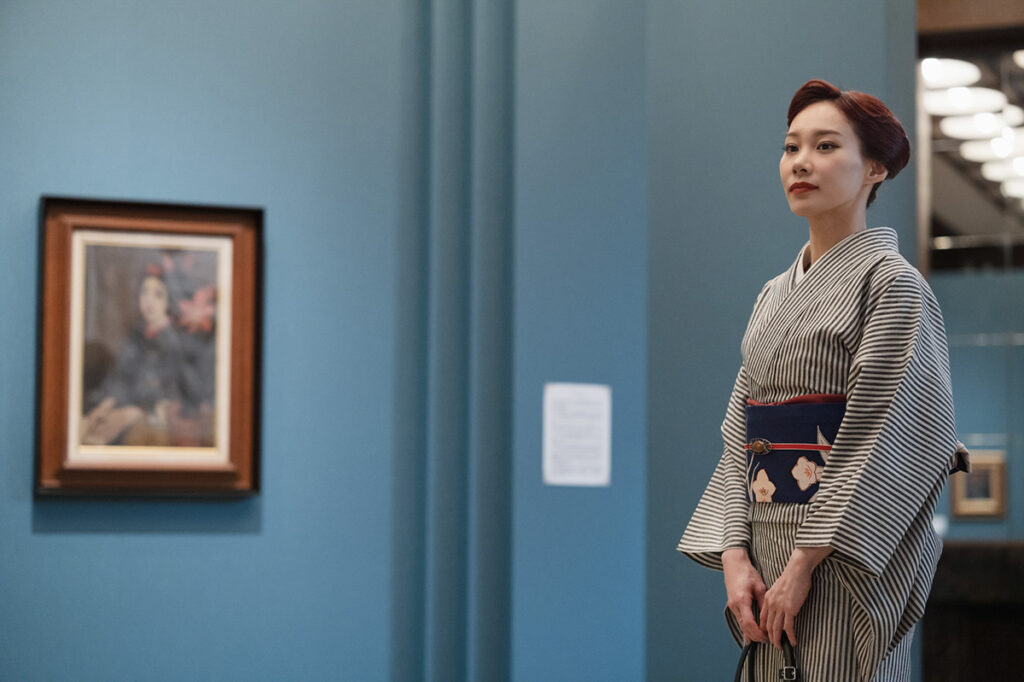
Yulia enchanted by ‘Amaryllis’ (1919, oil on canvas, Collection of the Yumeji Art Museum).
During my visit to the museum, there was an exhibition commemorating the 140th anniversary of Yumeji Takehisa’s birth titled ‘YUMEJI Exhibition.’ This exhibition beautifully melded numerous masterpieces from the romantic Taisho era, which marked the beginning of a new cultural movement, with the Art Deco architecture of the building. The result was a unique blend of historical ambiance. Unlike conventional white cube galleries, the museum excluded a dreamlike atmosphere that highlighted the affinity between contemporary art and architecture. The exhibition featured notable pieces such as the long-lost and legendary masterpiece ‘Amaryllis,’ alongside sketchbooks unveiled for the first time, capturing Yumeji’s impressions during his travels across Europe and the Americas. It provided a glimpse into Yumeji Takehisa’s innovative aesthetic, crafted amidst the dynamic global changes of the early 20th century.

Channeling the image of the woman depicted in the artwork Amaryllis in light, early summer attire.
Yulia explains, “Yumeji’s portraits of beautiful women are highly inspirational for coordinating kimono outfits. The patterns and color combinations reflect the fashionable sensibilities of that era, often leading to delightful discoveries and inspiration.”
This time, Yulia portrays a story inspired by the oil painting Amaryllis, which could be seen as the centerpiece of the exhibition. The woman depicted wears a kimono with bold stripes in shades of indigo, paired elegantly with a vibrant turquoise obi. This exquisite color scheme, accentuated by deep crimson on the collar and obi sash, harmonizes with the Amaryllis flowers. Rather than directly mimicking such a glamorous female figure, Yulia constructs her interpretation of Yumeji’s evocative aesthetic, considering seasonal and architectural balance.
“To avoid an overly antique Taisho-era look that might clash with the modern ambiance of the Teien Art Museum, I focused on selecting contemporary kimono styles. I drew inspiration from the Taisho era’s fascination with Western fashion and opted for a lightweight pongee with delicate Western-style stripes,” says Yulia.
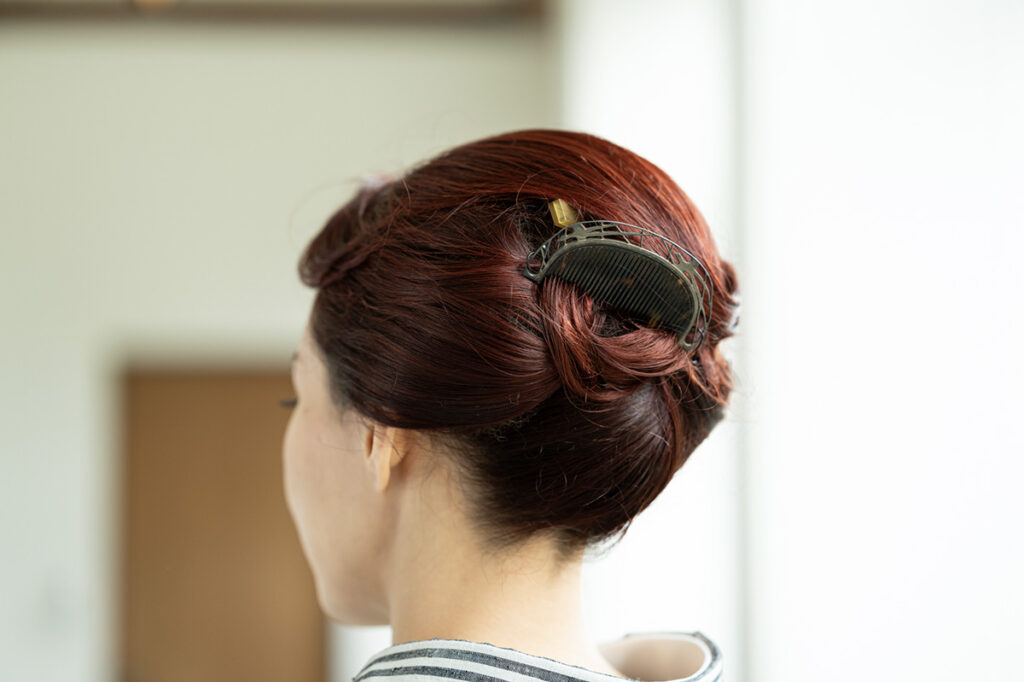
Inspired by the woman in Amaryllis, she styled her hair up high. A modern touch and seasonal theme was expressed with the hairpin adorned with a swallow motif.
The carefully chosen fine-striped pongee is transformed into a more Western-style look with a glossy sash dyed in azure hues featuring summer flowers like lilies and bellflowers on a figured silk base. “My mother had this kimono custom-made for me, this dyed sash(obi) is limited to the season from the end of May to June for Summer kimono vs. It’s a special pleasure to wear kimonos that incorporate family stories. To subtly evoke the mood of the Taisho era, I’ve added wine-red accents to the obi sash and sandals,” she explains, reflecting on the sentiments woven into her ensemble.

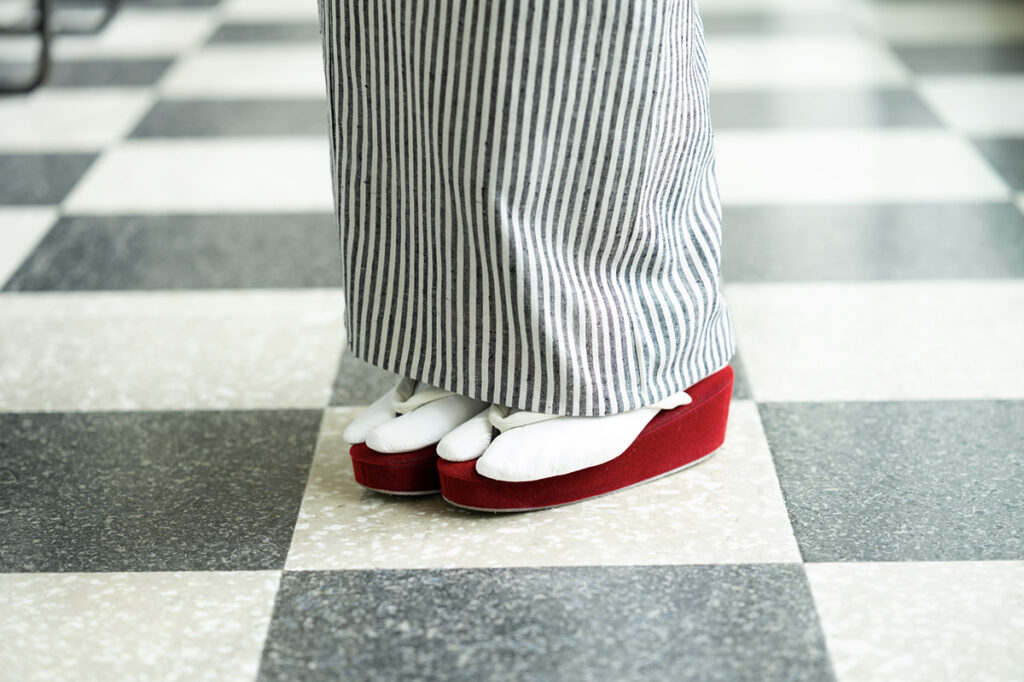
The contrast around the obi is striking and the glossy velvet material of the sandals adds a retro flair.

“I was torn between the two,” said Yulia, as she prepared another obi covered with roses from the Taisho era. The black parts are made of velvet. An Art Deco-style delicate pearl obidome serves as an accent.
On the other hand, the obidome and hairpins (kanzashi) draw inspiration from the designs scattered throughout the museum.
“Contemplating visits to art museums, the displayed artworks, and the changing seasons, and reflecting on how to narrate a tale through kimono attire is just delightful. Instead of merely matching motifs directly, exploring the meanings concealed within colors, patterns, and the imagery conveyed by materials can spark one’s imagination. The subtlety, the idea that there’s more to the whole story than what’s visible, that underscores the creativity unique to kimono.”
Yulia’s ‘Narratives in Kimono’ infused with a blend of Taisho Romanticism and Art Deco style, invites appreciation for every intricate detail. The visual presentation and the thoughtful concepts behind the crafted ensemble truly highlight her innovative sense of style.
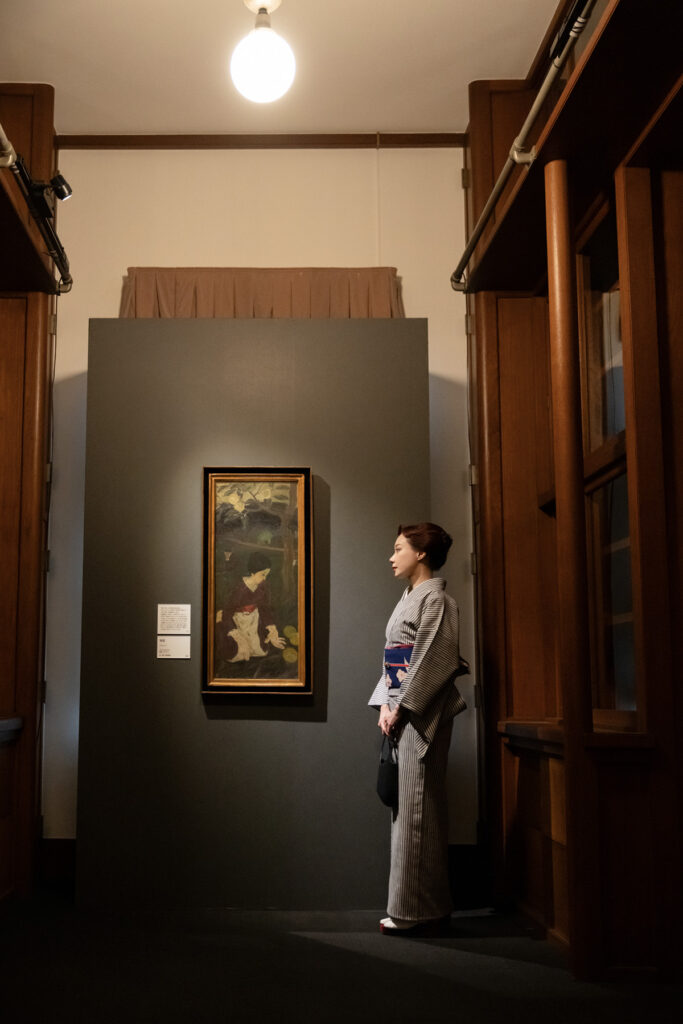
In the adjacent library next to the study, Yulia’s presence while admiring the paintings emerging from the dimly lit space epitomizes the essence of ‘In Praise of Shadows.’
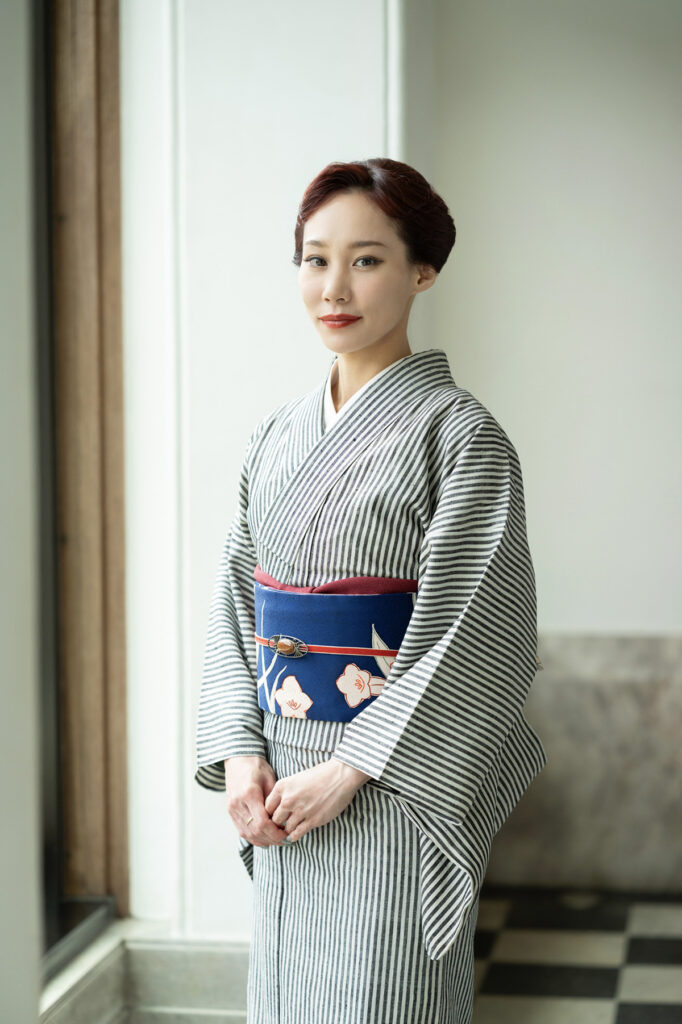
Mademoiselle Yulia
She began her career as a DJ and singer in her teens. Based in Tokyo, Mademoiselle Yulia is actively engaged globally, organizing kimono styling sessions, kimono workshops, and writing columns. In 2023, she co-founded the brand KOTOWA with friends to add stylish flair to everyday wear by incorporating kimono. She also runs a YouTube channel called ‘Yulia’s Room,’ where she uploads new content every week.
instagram: @MADEMOISELLE_YULIA
The location featured: Tokyo Metropolitan Teien Art Museum Address: 5-21-9 Shirokanedai, Minato-ku, Tokyo Website: https://www.teien-art-museum.ne.jp/en/


